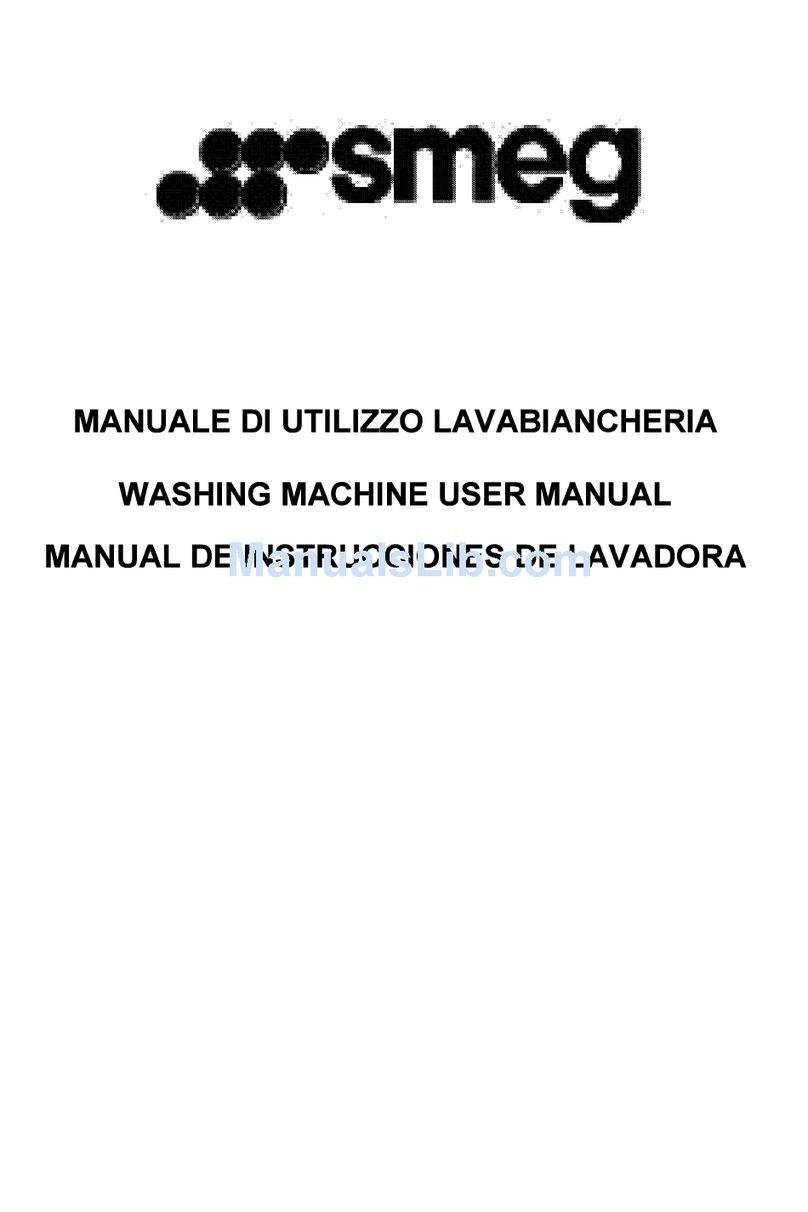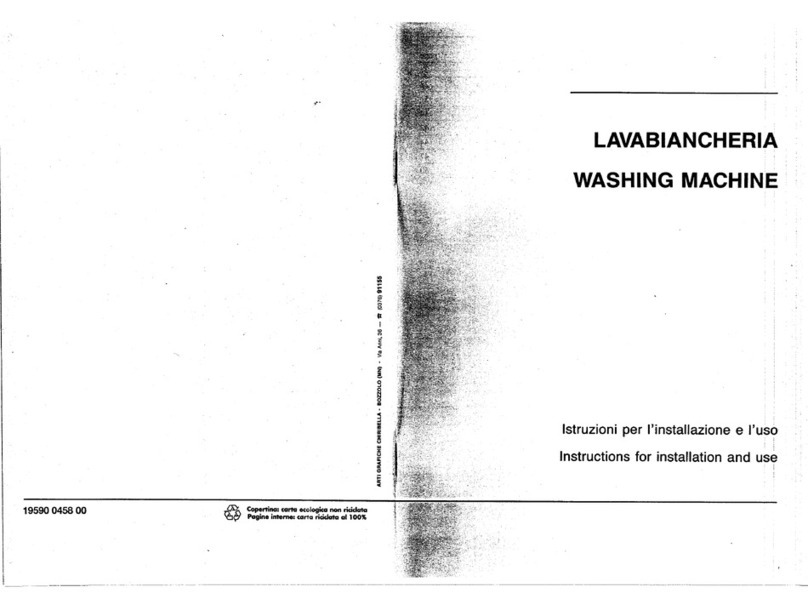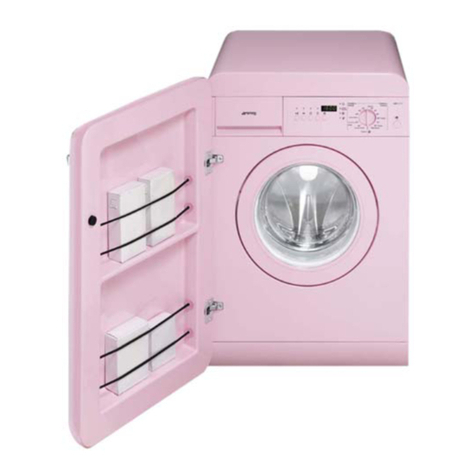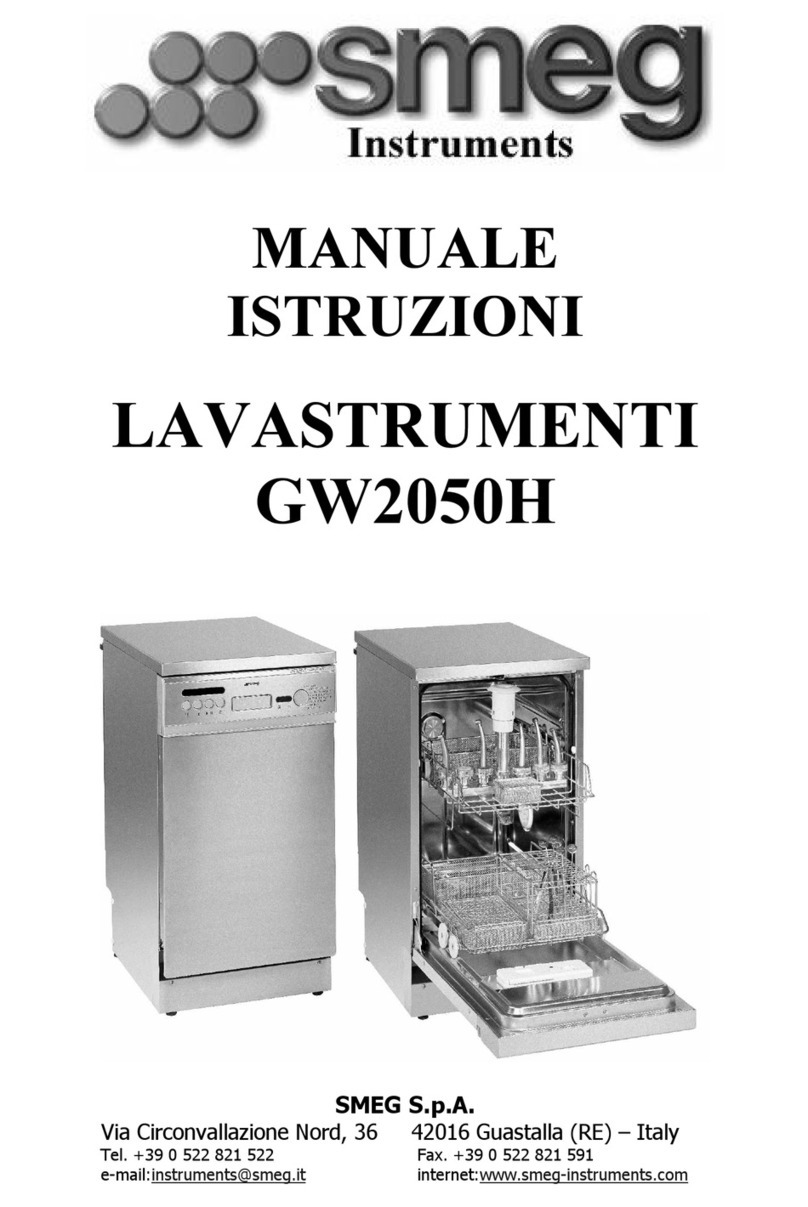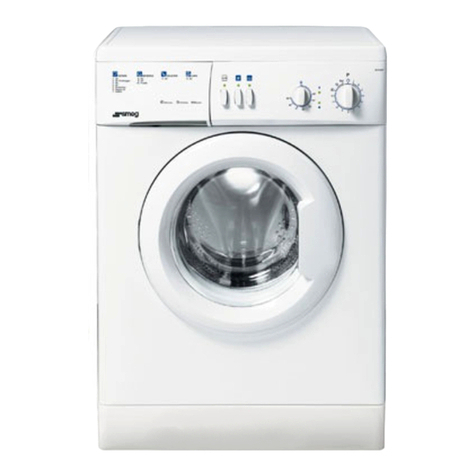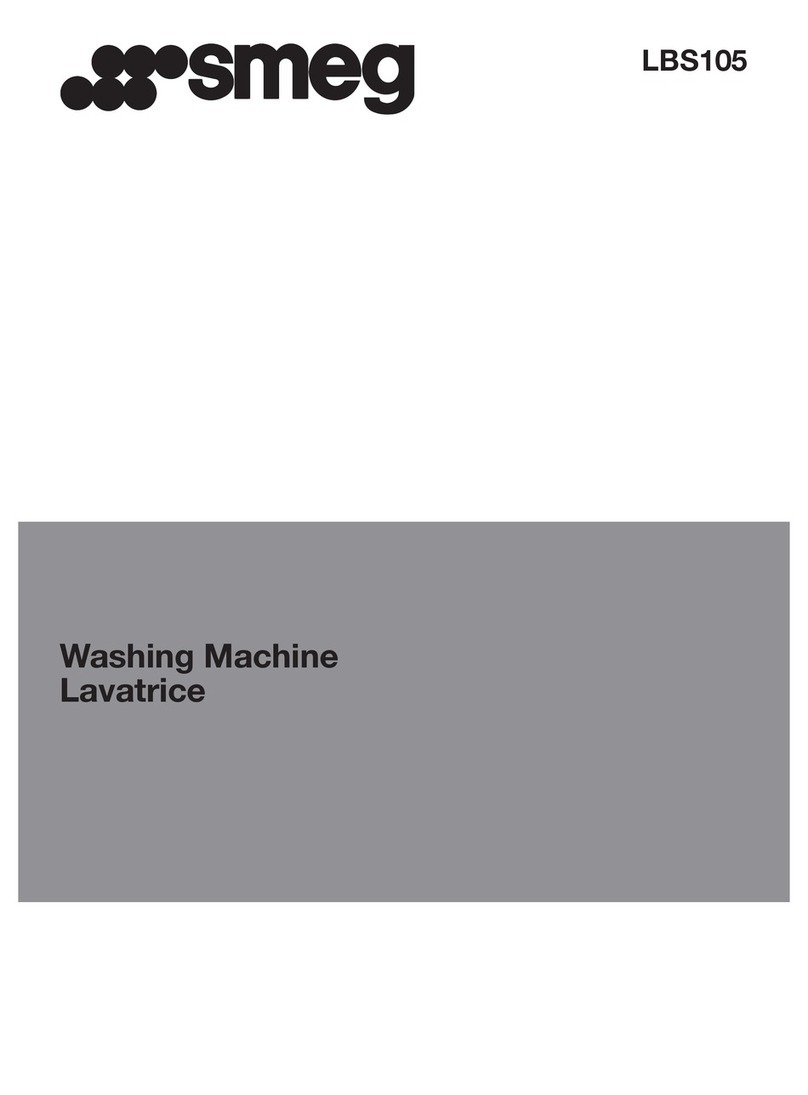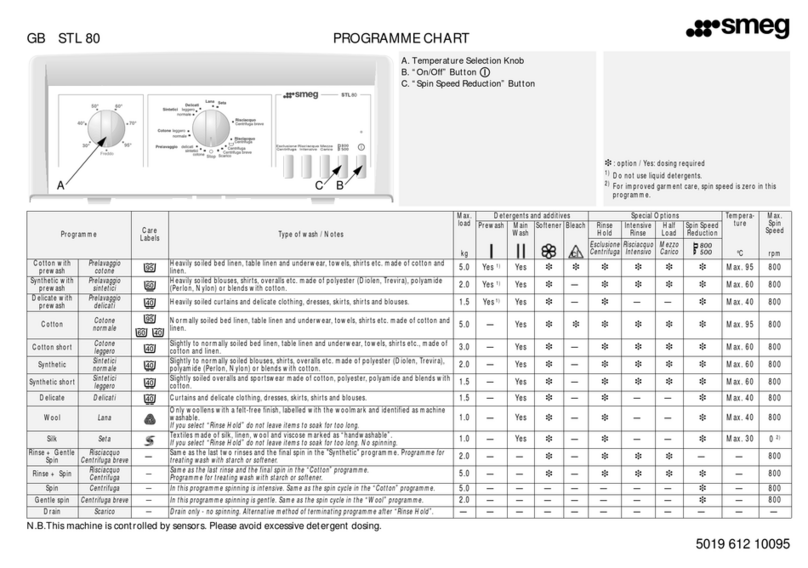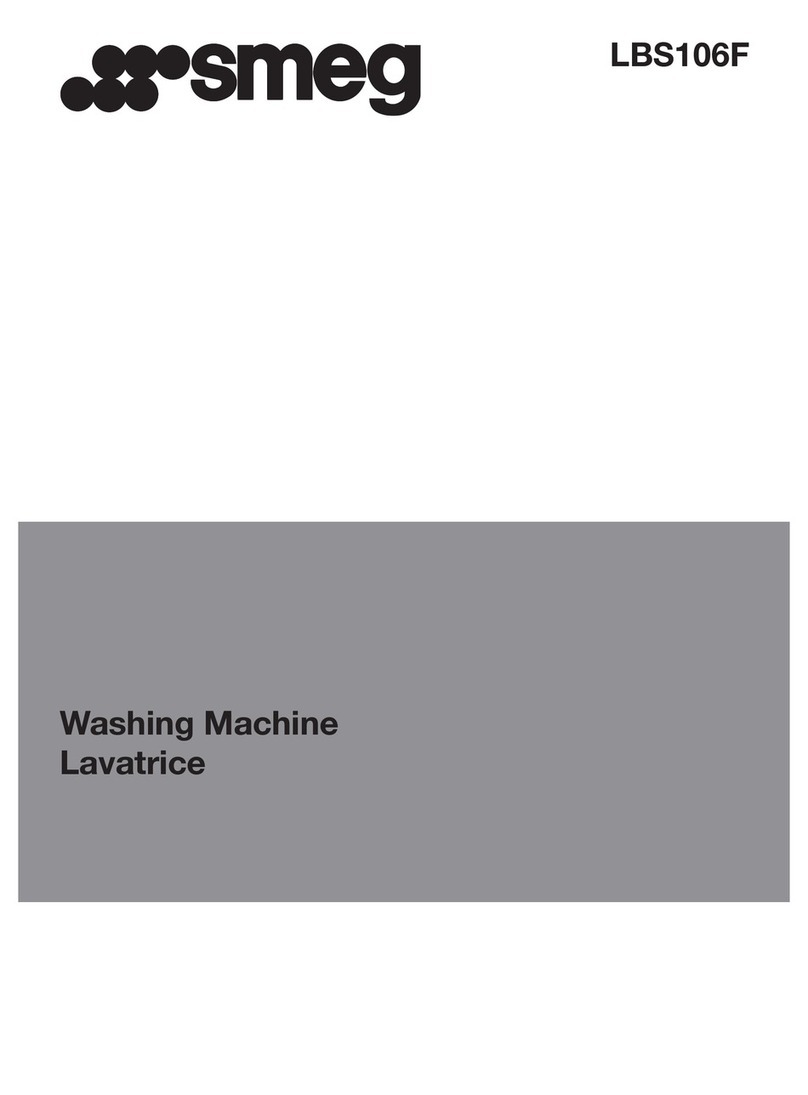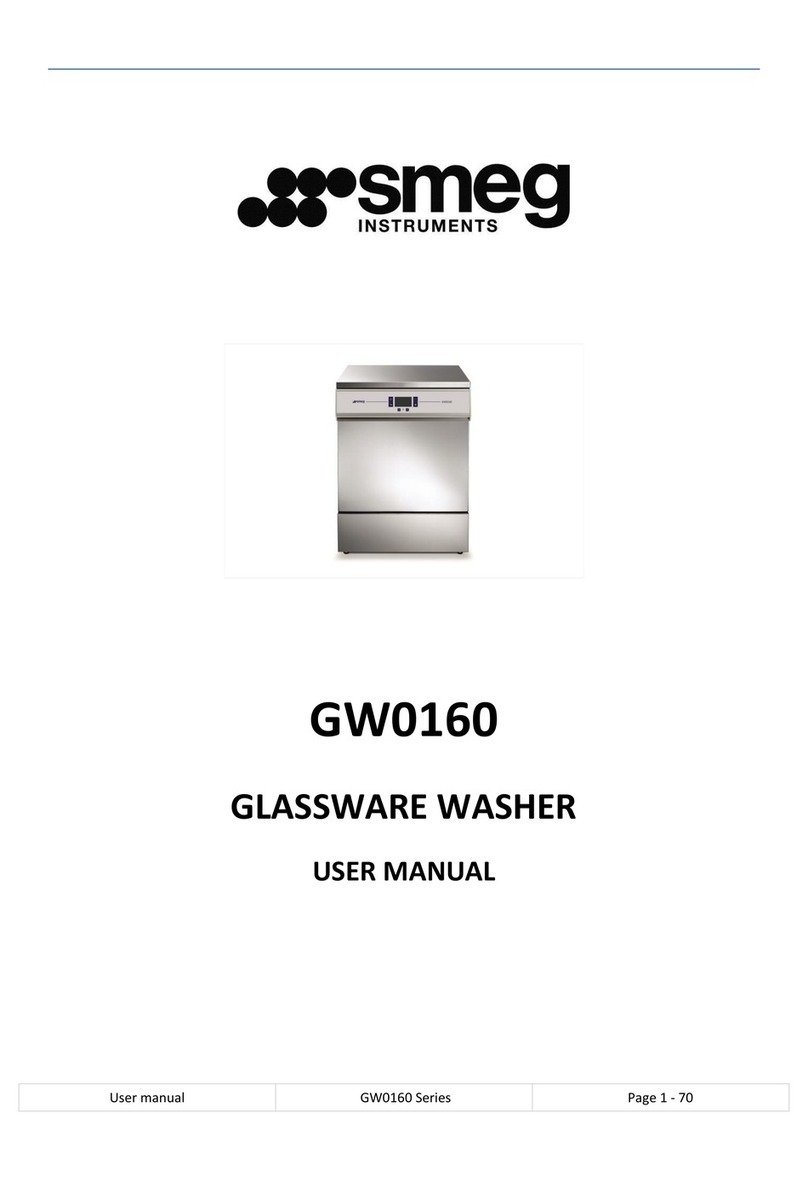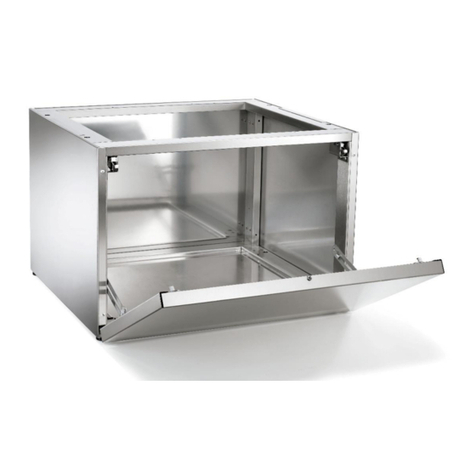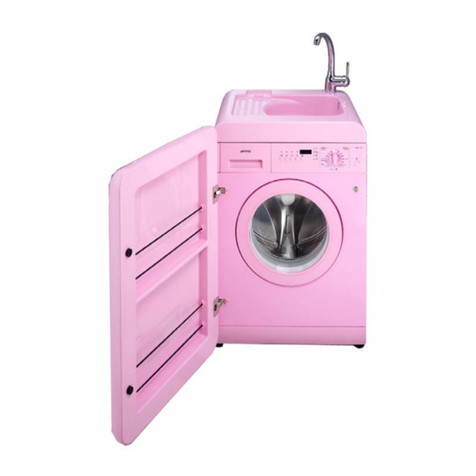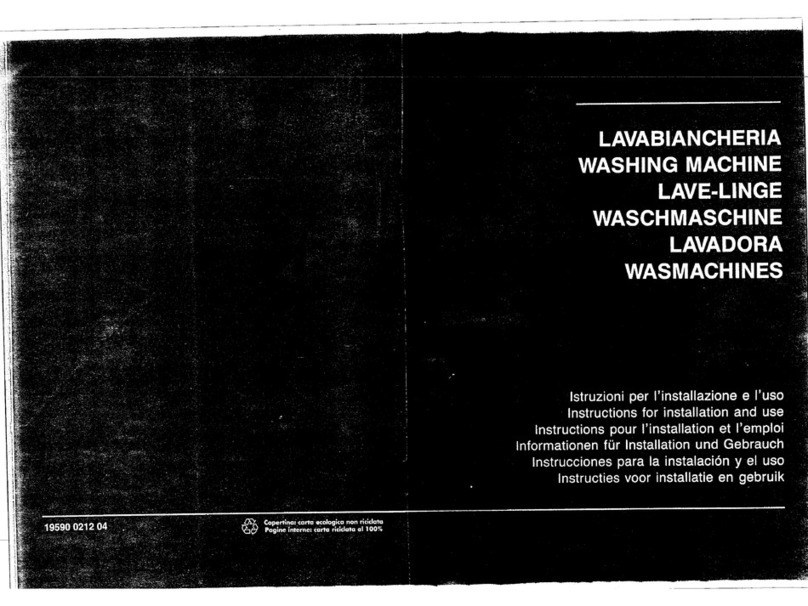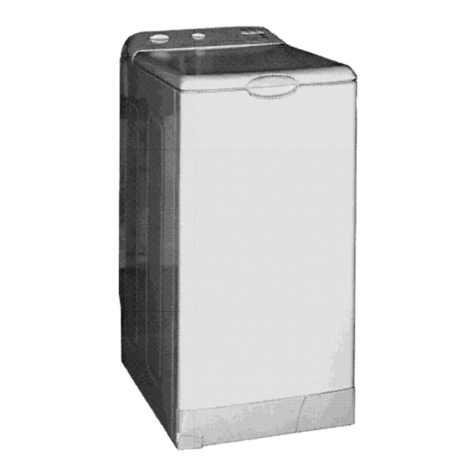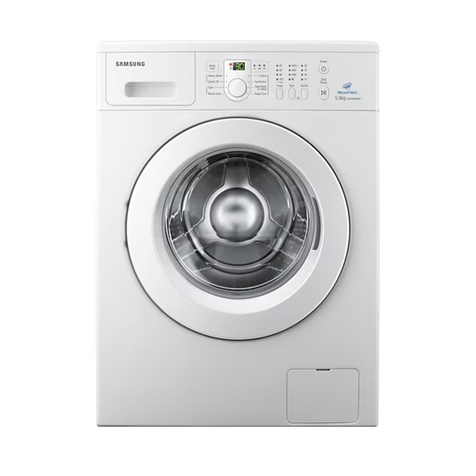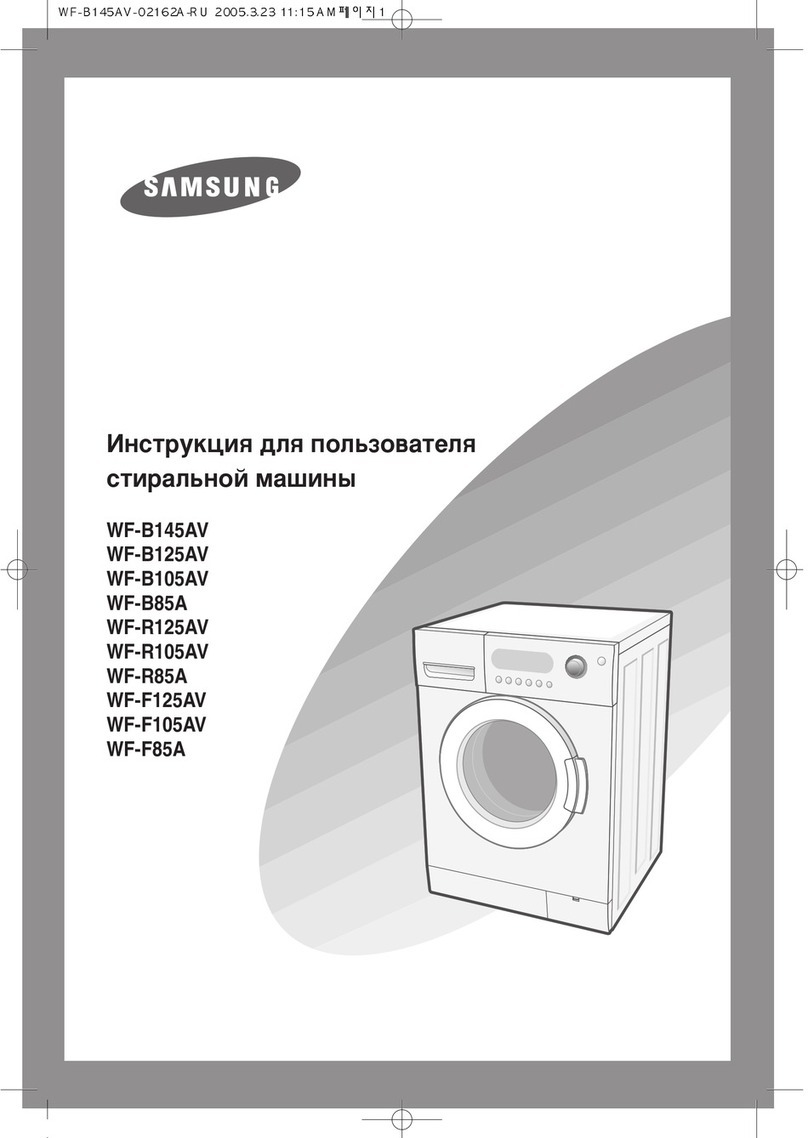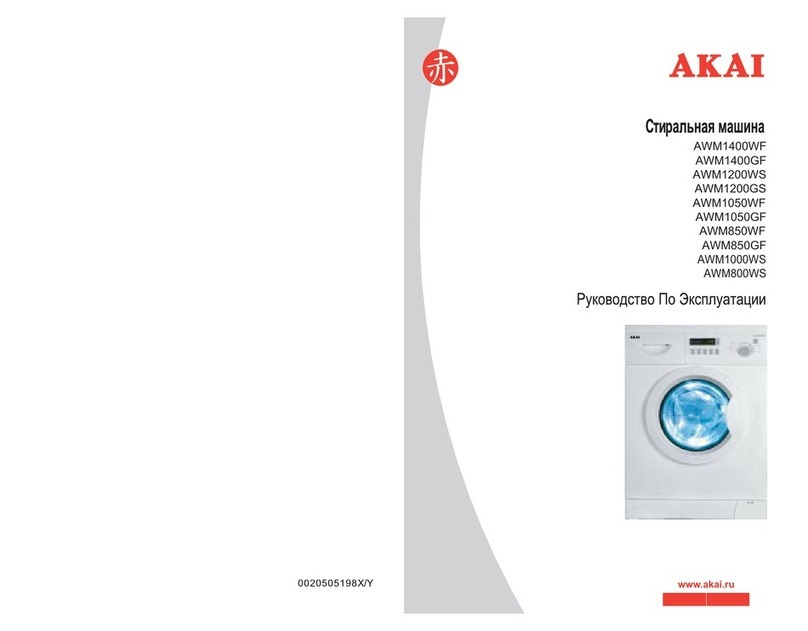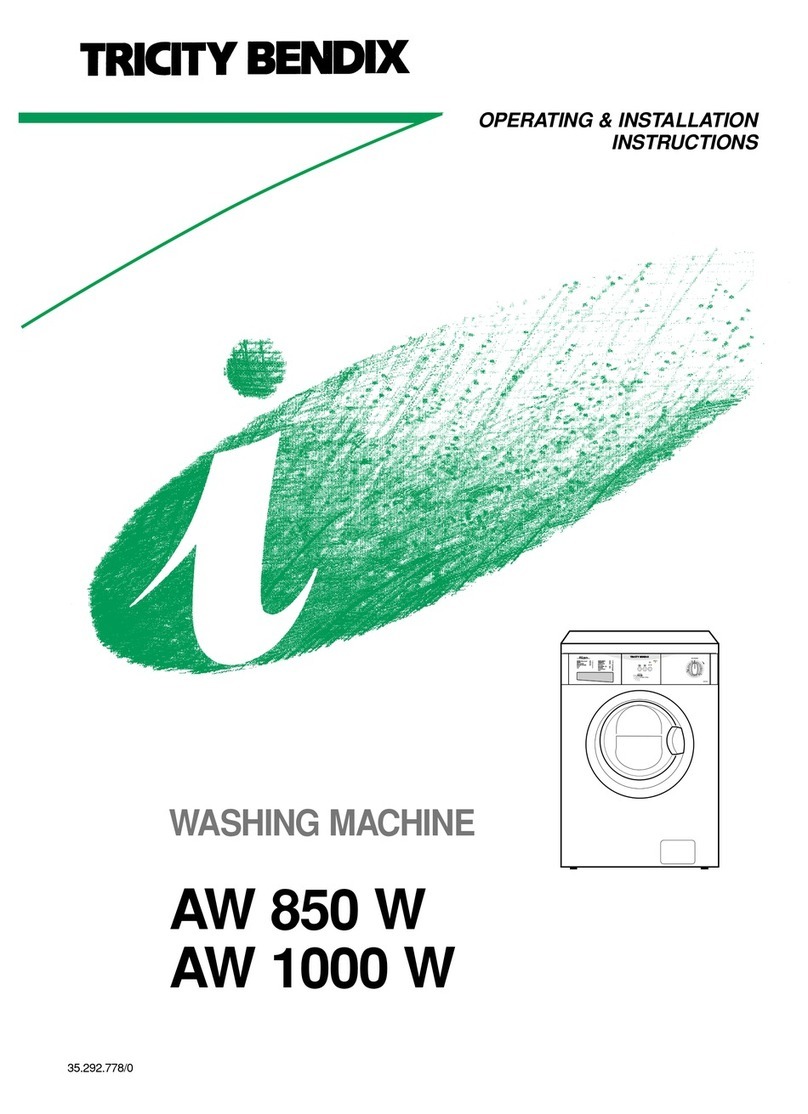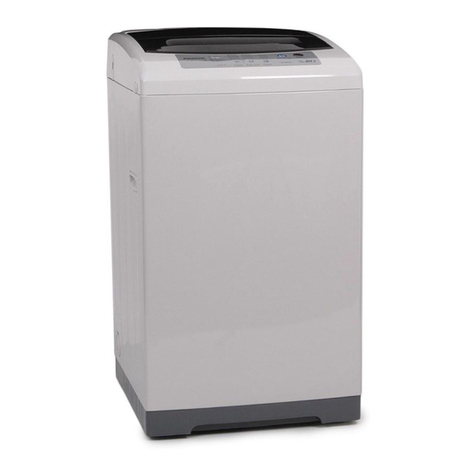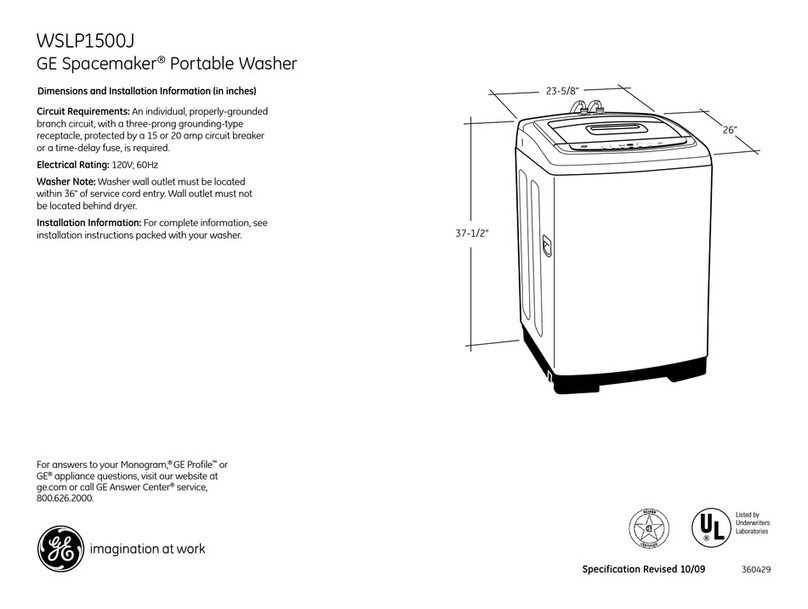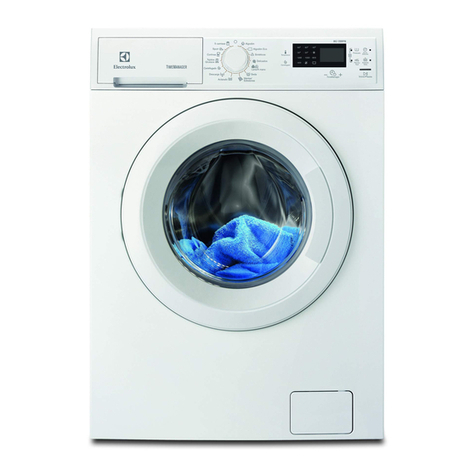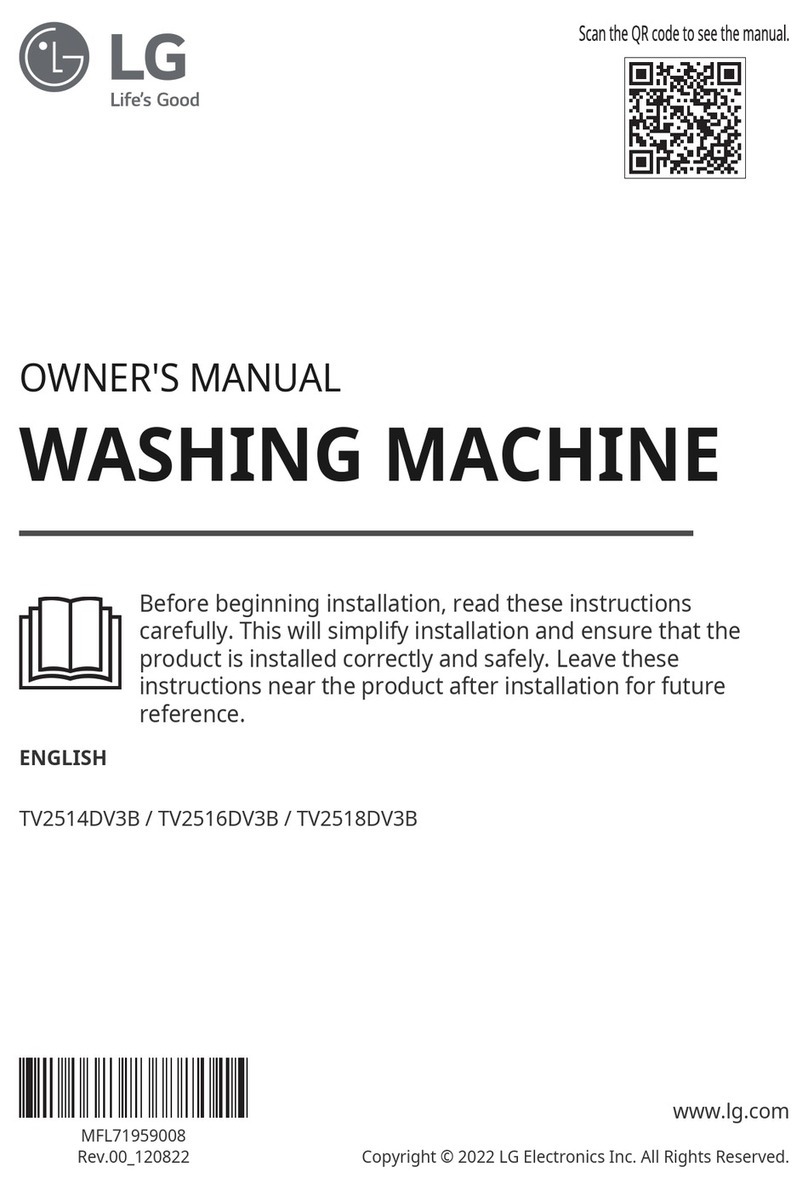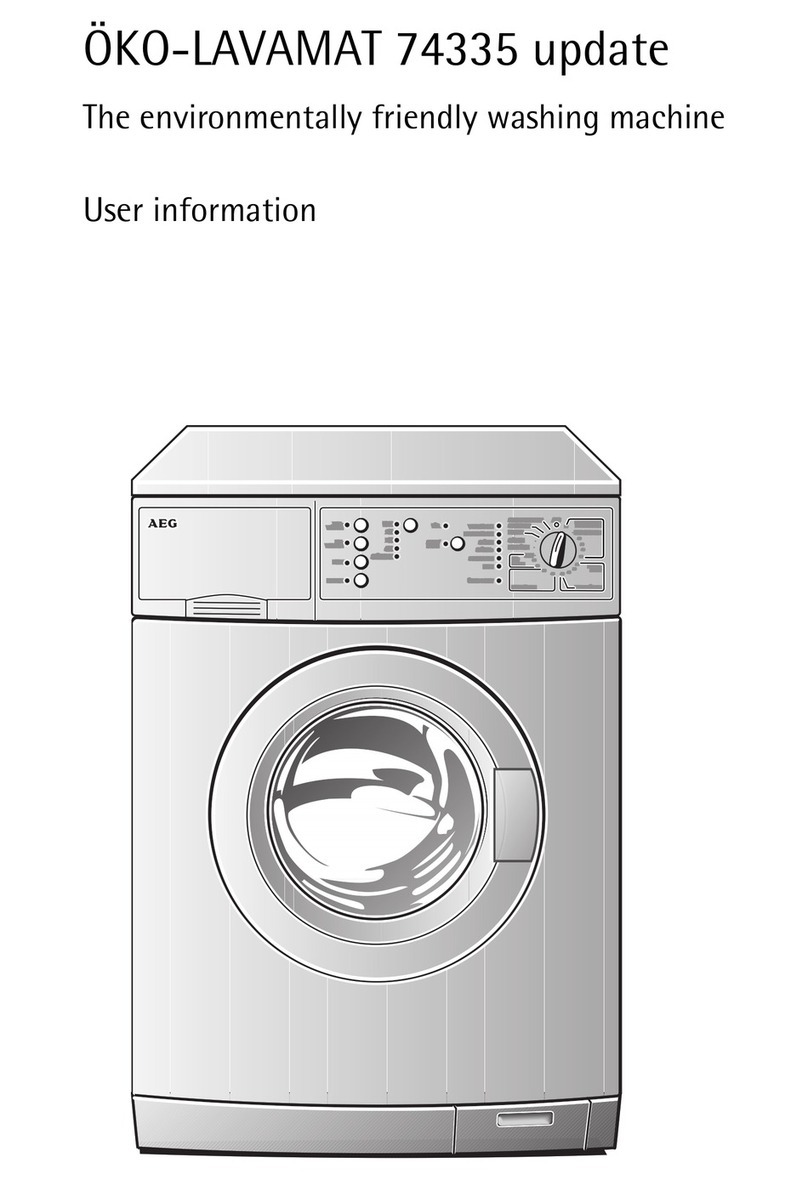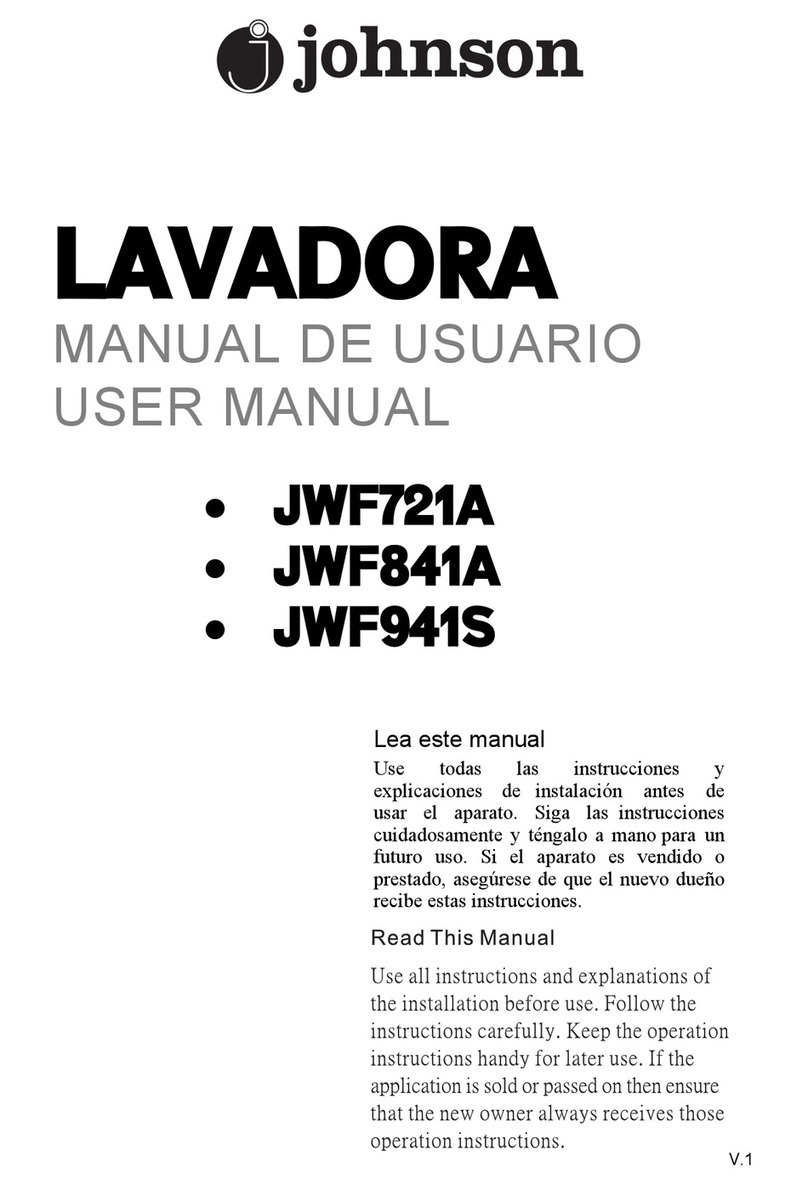STAIN REMOVAL
Not all stains can be removed by a machine wasching.
The following instructions describe the treatment to be given to material prior to being loaded in the machine, in
order to avoid an unsuccessful wash and the formation of residual discolouring.
- Wax: Remove the wax with a non-cutting edge in order to remove as much as possible, then place a sheet of
paper between an iron and the stained item.
- Ball point and felt tip pens: Reduce the stain with the aid of a soft cloth soaked in colourless 90°alcohol. Be
careful not to spread the stain.
- Damp marks and mildew: After having checked that the item is colourfast on a non-visible part, put it to soak
in water with added bleach. Otherwise, place the item in 10% oxygenated water and leave for 10- 15 minutes.
- Ironing marks: If the fabric is slightly marked, use the procedure described for mildew.
- Rust: Use an anti-rust product following the manufacturer's instructions.
- Chewing gum: Dilute using acetone and remove with a clean cloth.
- Paint: Do not wait for the paint to dry. Treat immediately with the solvent indicated on the paint container (water,
turps, trichloroethylene), wash with soap and water, then rinse.
- Lipstick: Dab with ether if the item is wool or cotton, or with trichloroethylene if it is silk.
- Nail varnish: Place the stained part of the item on a sheet of absorbent paper, then wet the other side of the
item with acetone. Ensure that the sheet of absorbent paper is changed frequently. Continue until the stain has
completely disappeared.
- Metal stains: Apply lemon juice until the stain has completely or almost disappeared.
- Grease or tar: Spread some fresh butter on the stain, leave for a while then dab with oil of turpentine.
- Grass: Soap delicately, treat with diluite bleach. For woollens, 90°alcohol can give good results.
DESCRIPTION OF WASHING SYMBOLS
Before putting the material in the machine, examine the clothing label in order to select the correct washing
programme.
The table illustrated below may be of help.
Resistent material
Delicate fabric
The item may be washed at 95°C
he item must be hand washed
Dry clean only
Can be bleached in cold water
Must not be bleached
Can be ironed at 200°C max
Do not iron
Can be dry cleaned
using any solvent
Must not be dry cleaned
Can only be dry cleaned using:
perchloride, lighter, fuel, pure alcohol,
R111 and R113
Can only be dry cleaned using:
aviation fuel, pure alcohol,
and R113
Dry flat
Can be hung to dry
Dry on clothes hanger
Can be dried in a clothes
drier at normal temperature
Can be dried in a clothes
drier at reduced temperature
Must not be machine dried
The item may be washed at 60°C
The item may be washed at 40°C
The item may be washed at 30°C
Can be ironed at 150°C max
Can be ironed at 100°C max
4
9595
6060
4040
3030
cl
A
P
F

